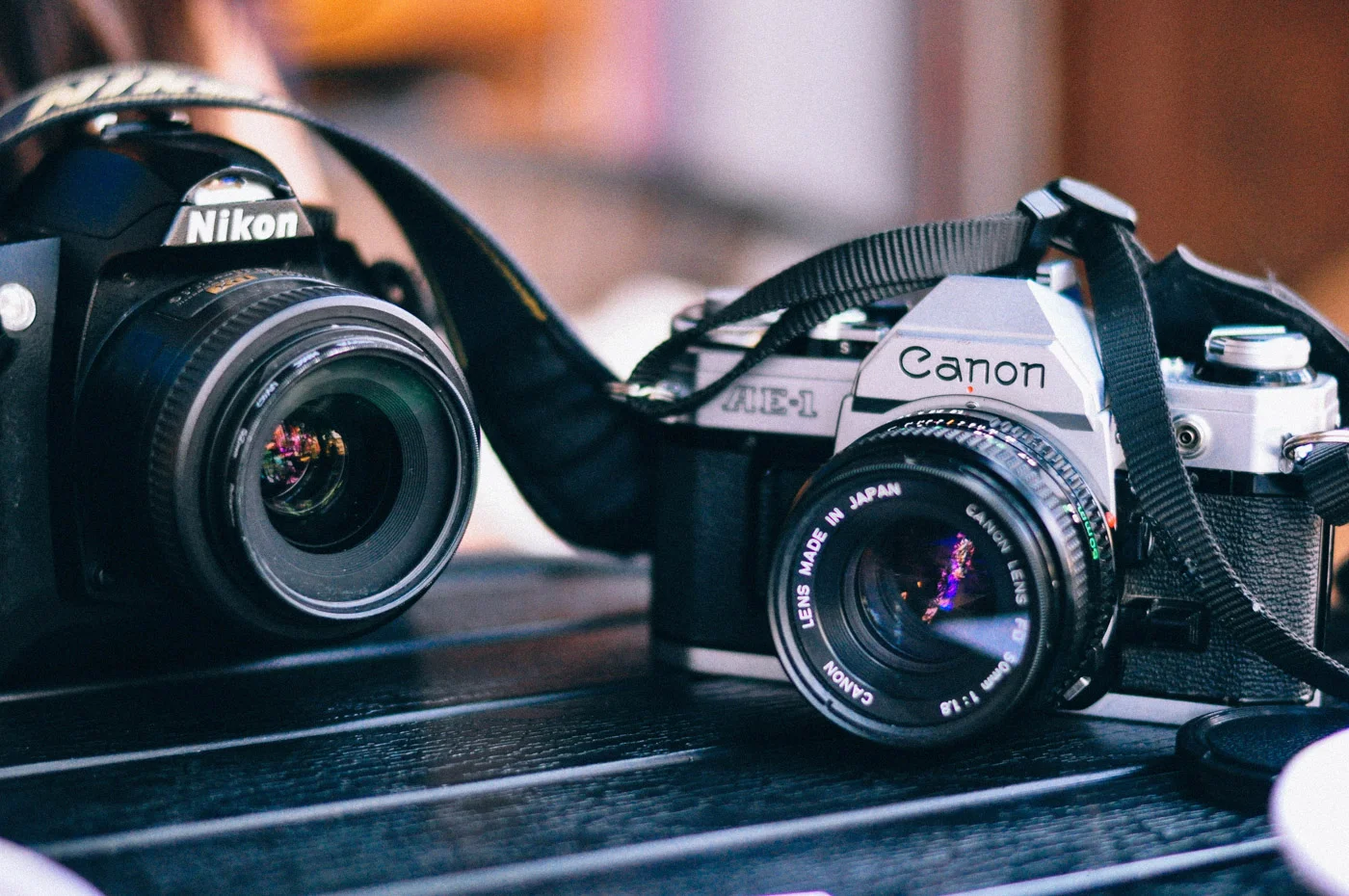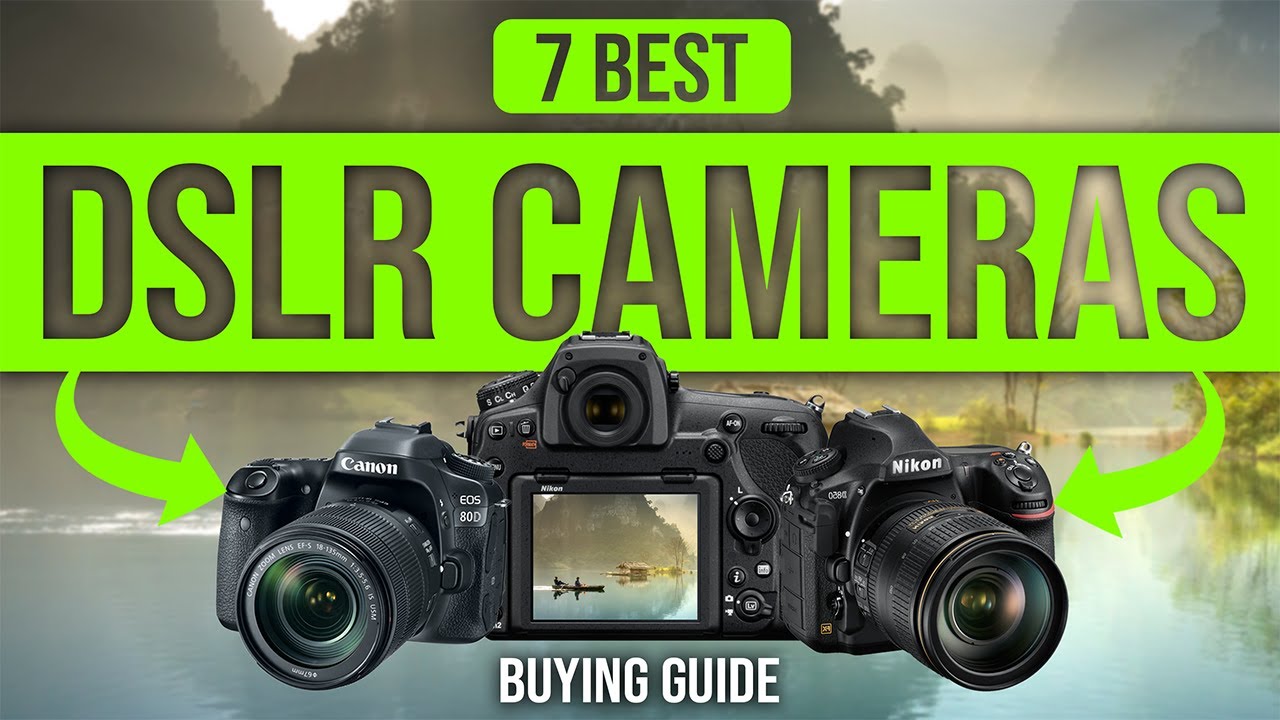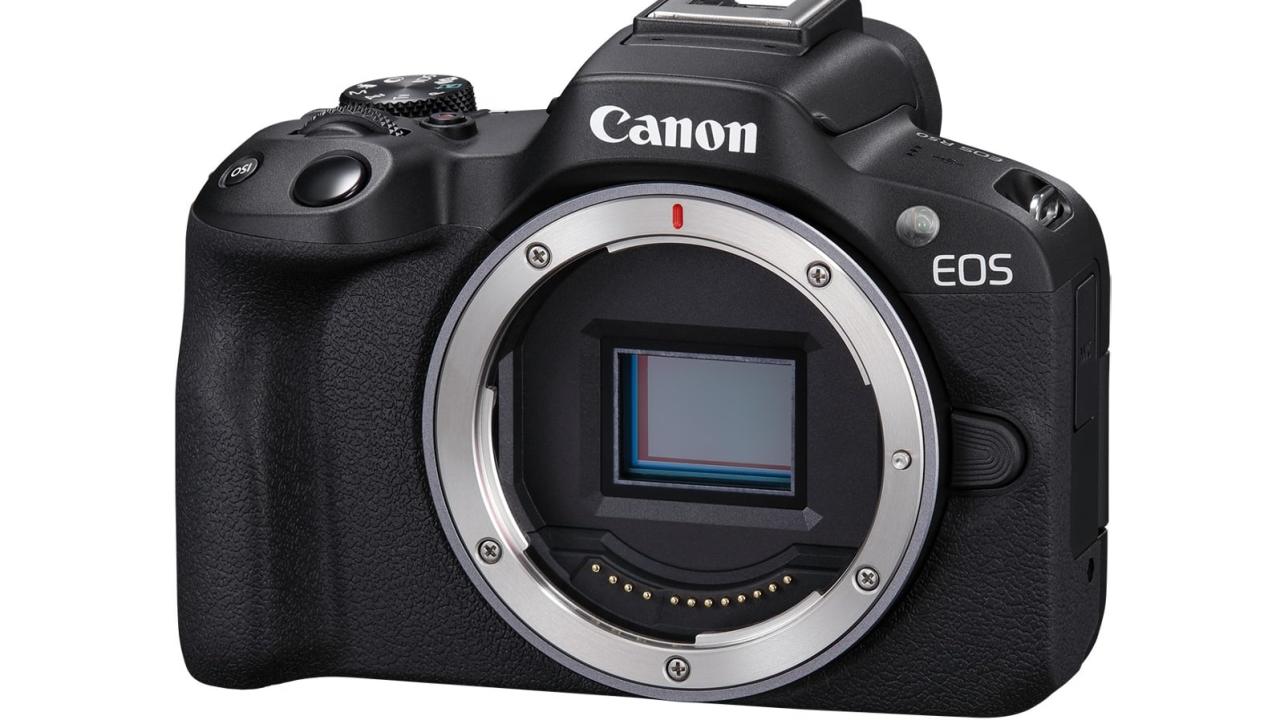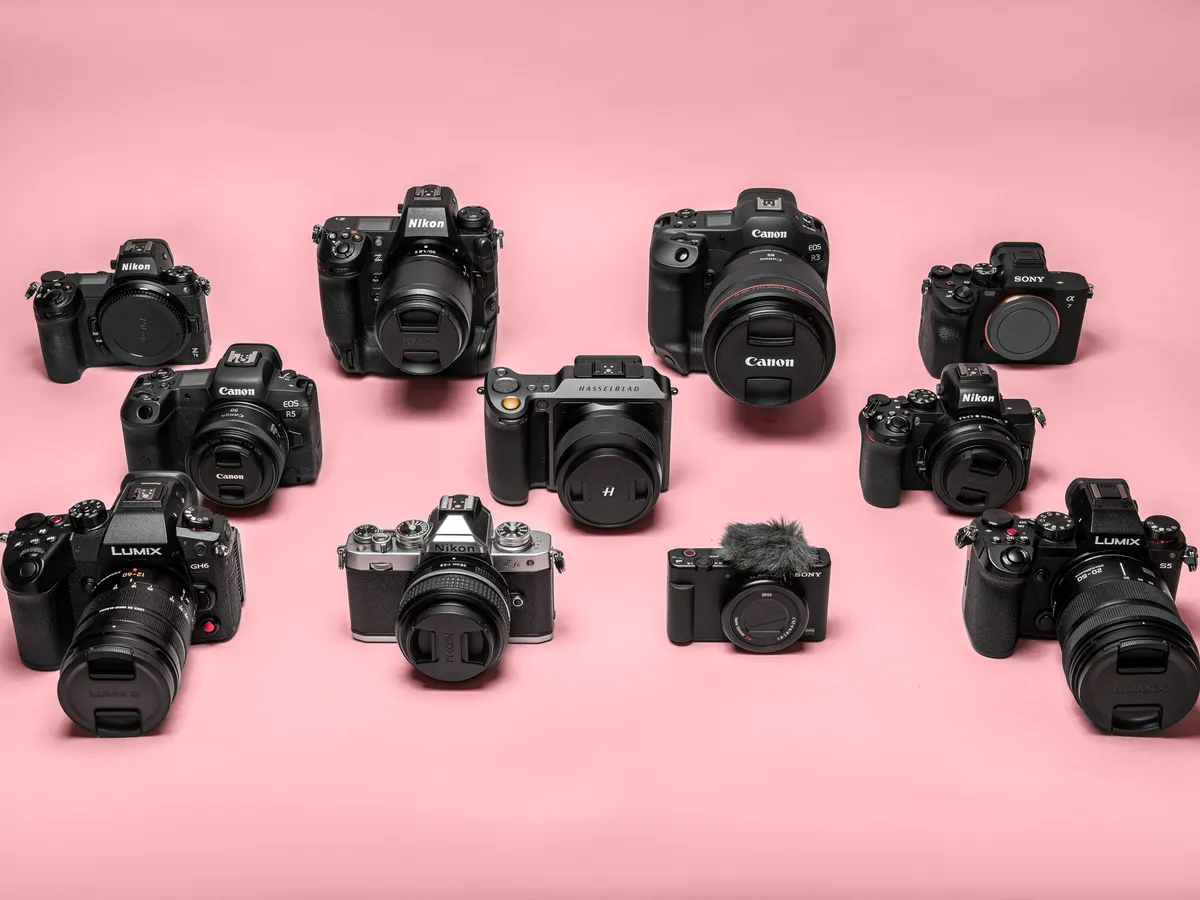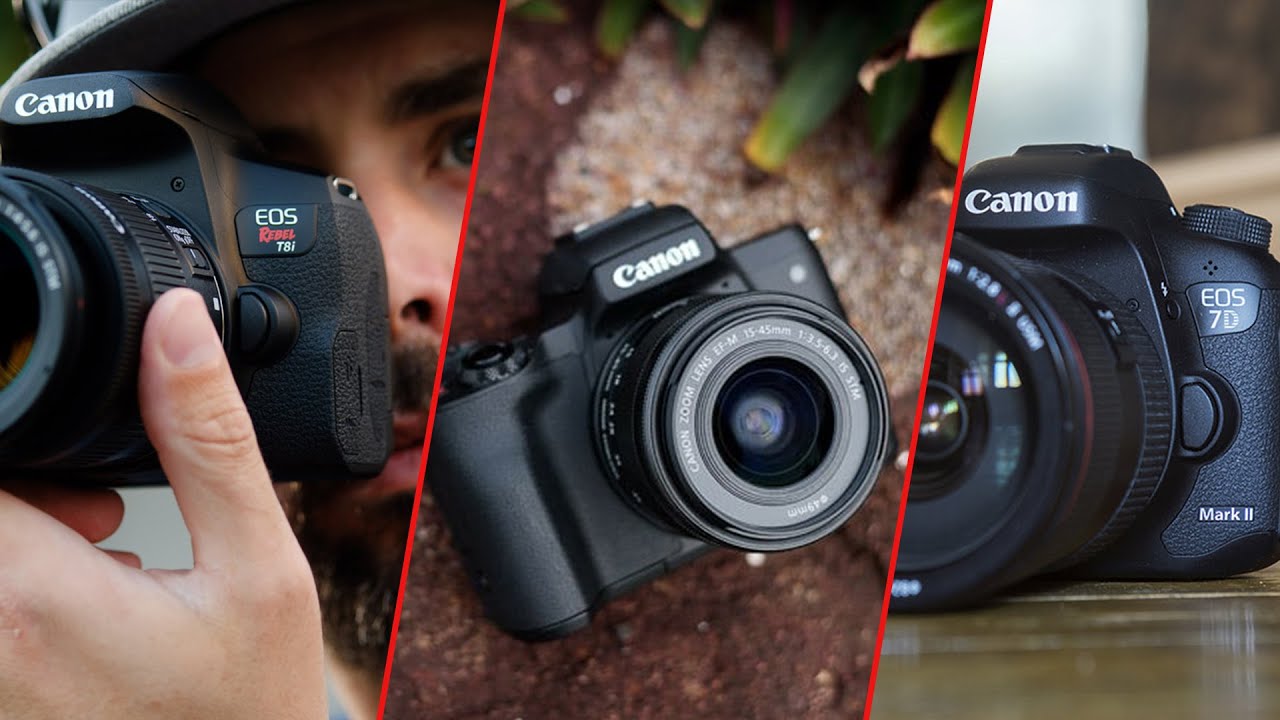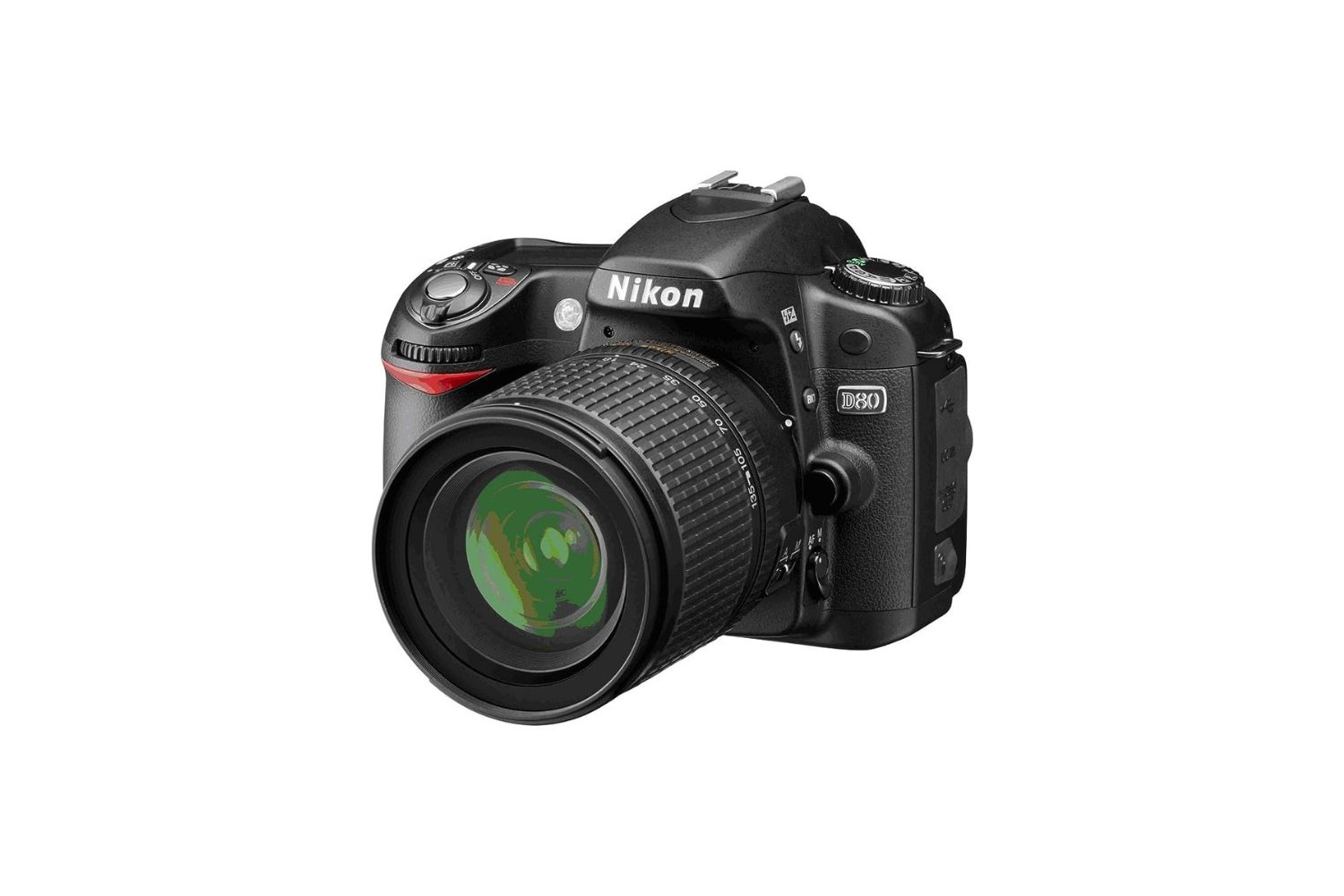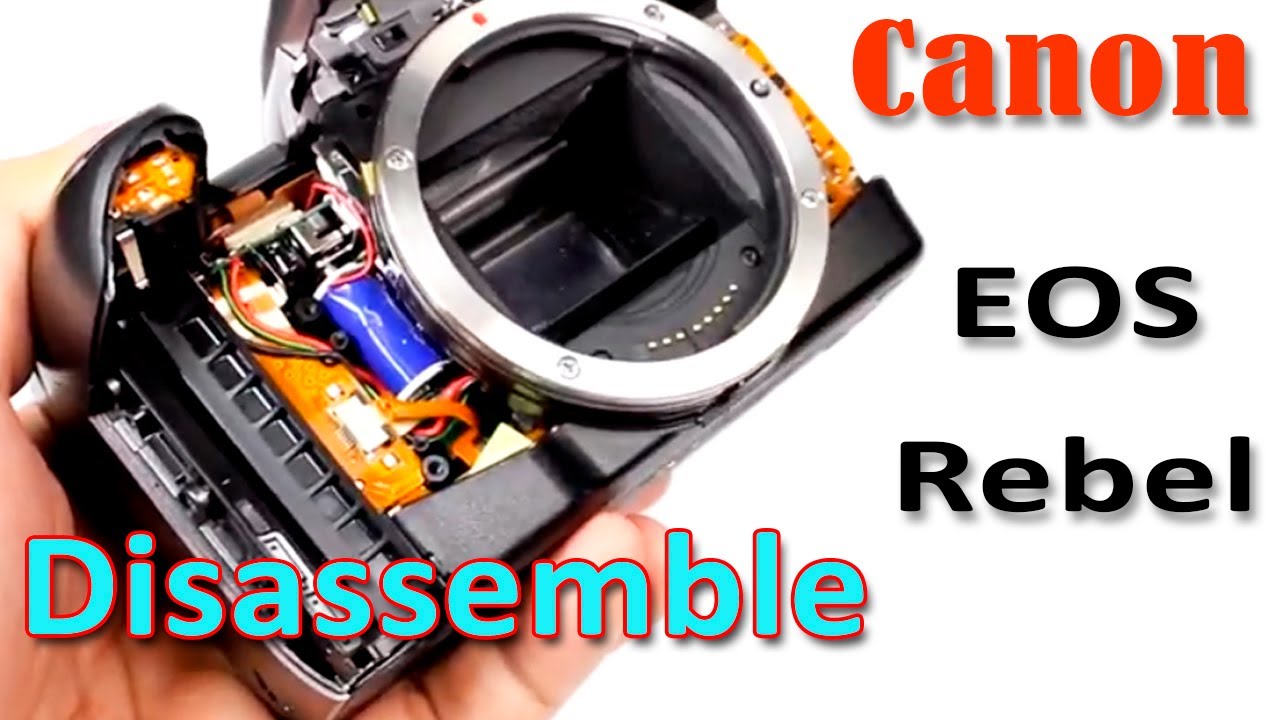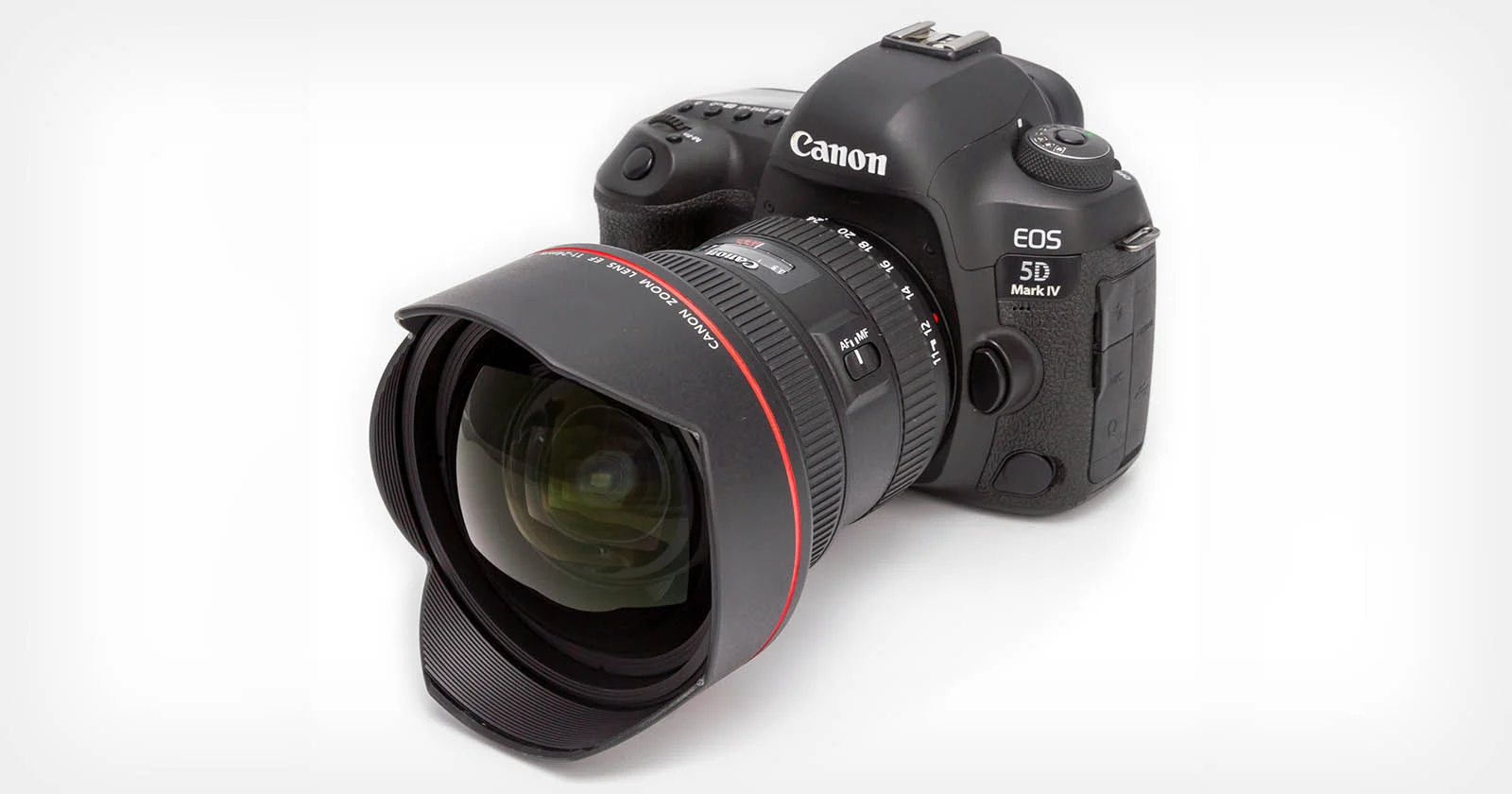Introduction
Welcome to the world of digital photography, where capturing stunning images has become easier and more accessible than ever before. If you have a passion for photography and are looking to take your skills to the next level, then you’ve likely come across the term “SLR digital camera.” But what exactly does it mean?
SLR stands for “Single Lens Reflex,” and a digital SLR camera is a type of camera that allows you to capture high-quality photos with a level of control and versatility that is unmatched by other digital cameras. It combines the flexibility of interchangeable lenses with the convenience of digital technology, resulting in a powerful tool for both professional photographers and enthusiasts alike.
With the rise in popularity of digital photography, the market has been flooded with a wide range of cameras, from compact point-and-shoot models to advanced mirrorless options. However, SLR digital cameras continue to hold a special place in the hearts of photographers who value image quality, versatility, and creative control.
In this article, we will delve into the world of SLR digital cameras, exploring their functionality, advantages, and disadvantages, as well as offering tips on how to choose the right camera for your needs. Whether you are a seasoned pro or just starting your photographic journey, understanding the ins and outs of SLR digital cameras will not only help you capture better images but also enhance your overall photography experience.
So, if you’re ready to embark on a journey of discovery, let’s dive into the exciting world of SLR digital cameras and explore why they are a favorite among photographers of all levels.
Definition of SLR Digital Camera
A SLR digital camera is a type of camera that uses a mirror and prism system to reflect light from the lens directly to the viewfinder. This allows photographers to see exactly what the lens sees, providing a clear and accurate representation of the scene. The “Single Lens Reflex” (SLR) design distinguishes it from other types of cameras, such as point-and-shoot or mirrorless cameras.
One of the key features of an SLR digital camera is its ability to use interchangeable lenses. This means that photographers can choose from a wide variety of lenses, such as wide-angle, telephoto, or macro lenses, to suit their specific needs. The ability to switch lenses allows photographers to adapt to different shooting situations and achieve a range of creative effects.
In addition to interchangeable lenses, SLR digital cameras also offer a range of manual controls that give photographers precise control over various aspects of their images. These controls include settings for aperture, shutter speed, ISO, and white balance, among others. This level of control allows photographers to fine-tune their images and capture photos that accurately reflect their artistic vision.
The “Digital” aspect of an SLR digital camera refers to its use of digital technology to capture and store images. Unlike traditional film cameras that use rolls of film, SLR digital cameras utilize image sensors to capture light and convert it into digital information. This digital information is then stored on memory cards, which can be easily transferred to a computer for editing and sharing.
Nowadays, most SLR digital cameras also offer video recording capabilities, allowing users to capture high-quality videos along with still images. This versatility makes SLR digital cameras a popular choice for photographers who want to dabble in videography as well.
Overall, the combination of the SLR design, interchangeable lenses, and digital technology makes SLR digital cameras a powerful tool for photographers who desire control, versatility, and high-quality results. Whether you’re a professional photographer looking to capture stunning landscapes or a hobbyist wanting to take your photography skills to the next level, the SLR digital camera is undoubtedly an indispensable tool in your photographic arsenal.
How SLR Digital Cameras Work
Understanding how SLR digital cameras work can shed light on the reasons why they are favored by photographers who value control and image quality. At the core of an SLR digital camera is its unique optical system, which consists of a mirror, prism, and lens.
When you look through the viewfinder of an SLR digital camera, you are looking through the lens itself. The light passing through the lens is reflected off a mirror positioned at a 45-degree angle. The mirror reflects the light upward toward a prism, which then redirects the light into your eye, resulting in an accurate preview of the scene.
When you press the shutter button to take a photo, the mirror quickly flips up, allowing the light to reach the image sensor located behind it. The image sensor captures the incoming light and converts it into a digital signal, which is then processed by the camera’s image processor.
One of the advantages of this design is that you see exactly what the lens sees through the viewfinder. This is known as the “through-the-lens” (TTL) view, providing a real-time and accurate representation of the scene, including factors such as exposure, focus, and depth of field. It allows you to make precise adjustments and composition decisions before pressing the shutter button.
In addition to the optical system, SLR digital cameras offer a range of customizable settings and controls. These controls allow photographers to fine-tune their images and achieve the desired look and feel. Some of the key settings include aperture, which controls the depth of field and amount of light entering the camera; shutter speed, which determines the exposure time; ISO, which determines the camera’s sensitivity to light; and white balance, which adjusts the color temperature of the image.
The versatility of SLR digital cameras is further enhanced by the ability to interchange lenses. Different lenses offer varying focal lengths, which affect the perspective and composition of the image. Wide-angle lenses capture a wider field of view, making them ideal for landscape and architectural photography. Telephoto lenses have longer focal lengths, allowing you to bring distant subjects closer, making them ideal for sports and wildlife photography.
The integration of digital technology in SLR cameras also opens up a world of possibilities for post-processing and editing. The digital files captured by the camera can be transferred to a computer for further enhancement, allowing photographers to adjust exposure, color balance, and other parameters to achieve their desired results.
Overall, the combination of the unique optical system, customizable settings, and interchangeable lenses make SLR digital cameras versatile tools that provide photographers with full control over their images. Whether you’re aiming to capture breathtaking landscapes or freeze a fast-paced action moment, the functionality and flexibility of SLR digital cameras make them an excellent choice for photographers at all levels of expertise.
Advantages of SLR Digital Cameras
SLR digital cameras offer a host of advantages that make them a preferred choice for many photographers, both amateurs and professionals. Here are some of the key advantages:
1. Image Quality: SLR digital cameras are known for producing high-quality images with exceptional detail, sharpness, and color accuracy. The larger image sensors and advanced image processing capabilities contribute to capturing stunning photos that can be printed in large sizes without compromising image quality.
2. Interchangeable Lenses: One of the main advantages of SLR digital cameras is the ability to change lenses. This flexibility allows photographers to adapt to different shooting situations and capture a wide range of subjects, from expansive landscapes to close-up details. The availability of various lenses ensures that photographers have the right tools to express their creative vision.
3. Optical Viewfinder: SLR digital cameras feature an optical viewfinder that offers a clear and real-time representation of the scene. This allows photographers to compose their shots with precision, accurately judge exposure, and make quick adjustments. The optical viewfinder also helps conserve battery life compared to electronic viewfinders found in mirrorless cameras.
4. Fast Autofocus: SLR digital cameras typically have advanced autofocus systems that provide fast and accurate focusing, especially when capturing moving subjects. This makes them suitable for various genres of photography, including sports, wildlife, and street photography, where quick and precise focus is crucial.
5. Performance in Low Light: The combination of larger image sensors and interchangeable lenses with wide apertures allows SLR digital cameras to excel in low-light conditions. They can capture well-exposed images with minimal noise, enabling photographers to work in challenging lighting situations without compromising image quality.
6. Physical Controls: SLR digital cameras offer a multitude of physical controls, including dials, buttons, and switches, which provide quick access to essential settings. This tactile interface allows photographers to make adjustments on the fly, without having to dig into menus, ensuring a seamless shooting experience.
7. Long Battery Life: Compared to their mirrorless counterparts, SLR digital cameras tend to have longer battery life due to the absence of a constant electronic viewfinder. This is a significant advantage for photographers who shoot for extended periods or when access to power sources is limited.
8. Compatibility and Support: SLR digital cameras have a wide range of compatible accessories, including flashes, external microphones, remote triggers, and battery grips, among others. Additionally, they are supported by various software programs for post-processing and editing, ensuring a robust ecosystem that caters to photographers’ needs.
These advantages collectively make SLR digital cameras a popular choice among photography enthusiasts and professionals who seek exceptional image quality, versatility, and precise control over their photographic output. Whether you’re a landscape photographer capturing majestic scenery or a portrait photographer aiming for stunning portraits, the advantages of digital SLR cameras can greatly enhance your photography experience and help you achieve outstanding results.
Disadvantages of SLR Digital Cameras
While SLR digital cameras offer numerous advantages, they also come with a few disadvantages that photographers should be aware of. Here are some of the key drawbacks:
1. Size and Weight: Compared to compact cameras or mirrorless cameras, SLR digital cameras tend to be bulkier and heavier. This can make them less convenient to carry around, especially for photographers who prefer lightweight and portable gear.
2. Complexity: SLR digital cameras offer a wide range of manual controls and settings, which can be overwhelming for beginners or those transitioning from point-and-shoot cameras. Understanding and mastering these controls may require a learning curve and some technical knowledge.
3. Noisy Operation: The mirror and shutter mechanism in SLR digital cameras can produce audible noise when taking photos, which may not be desirable in certain situations where silence is crucial, such as wildlife or wedding photography.
4. Price: SLR digital cameras, especially high-end models, can be quite expensive compared to other types of cameras. Additionally, the cost of lenses and other accessories can significantly add to the overall investment required for a complete SLR digital camera system.
5. Limited Live View and Video Functionality: SLR digital cameras typically offer limited live view and video capabilities compared to mirrorless cameras. The optical viewfinder design limits the use of live view for composing images on the LCD screen, and autofocus during video recording may not be as advanced or seamless.
6. Dust and Maintenance: The internal mirror and sensor system in SLR digital cameras are susceptible to dust particles, requiring occasional cleaning or maintenance to maintain image quality. Dust can accumulate on the sensor and cause spots or blemishes in photos, necessitating regular sensor cleaning.
7. Continuous Shooting Speed: While SLR digital cameras have improved in terms of continuous shooting speed, they may not match the rapid-fire capabilities of some mirrorless cameras. This can be a disadvantage in situations where capturing fast action or sports photography requires a high burst rate.
8. Limited Live Exposure Preview: SLR digital cameras rely on through-the-lens (TTL) optical viewfinders, which may not provide an accurate representation of exposure settings. Changes in aperture, shutter speed, or ISO may not be visible until the photo is taken or reviewed on the LCD screen.
Despite these disadvantages, SLR digital cameras remain a popular choice among photographers who prioritize image quality, versatility, and precise control over their photography. It’s important to assess your individual needs and preferences to determine if the advantages outweigh the drawbacks for your specific style of photography and shooting requirements.
Popular SLR Digital Camera Brands
When it comes to SLR digital cameras, several manufacturers have established a strong reputation for producing high-quality and reliable camera systems. Here are some of the most popular SLR camera brands:
1. Canon: Canon is a leading manufacturer of SLR digital cameras, known for its wide range of camera models catering to all levels of photographers. Canon cameras are praised for their excellent image quality, advanced autofocus systems, and extensive lens ecosystem. They offer options for beginners, enthusiasts, and professional photographers, making Canon a go-to brand for many.
2. Nikon: Nikon is renowned for its exceptional camera technology, delivering impressive image quality, robust build quality, and advanced features. Nikon offers a diverse lineup of SLR digital cameras, from entry-level models to professional-grade bodies. The brand is particularly popular among photographers who value low-light performance, dynamic range, and reliable autofocus capabilities.
3. Sony: Sony has gained significant popularity in the SLR camera market, particularly with its innovative mirrorless camera systems. However, Sony also produces SLR digital cameras that deliver excellent image quality and a range of features. Sony cameras often excel in high-resolution capabilities, video capabilities, and advanced autofocus performance.
4. Pentax: Pentax is known for its durable and weather-sealed SLR digital cameras, making them a favorite among outdoor and adventure photographers. Pentax cameras are highly regarded for their exceptional image quality, built-in image stabilization, and user-friendly interfaces. They offer a range of models for different skill levels and a wide selection of affordable lenses.
5. Olympus: Olympus is recognized for its compact and lightweight SLR digital cameras that offer a combination of advanced features and portability. Olympus cameras are known for their exceptional image stabilization, high-speed autofocus, and rugged construction. They also have a dedicated lineup of lenses designed for their Micro Four Thirds system.
6. Fujifilm: Fujifilm is known for its retro-inspired SLR digital cameras that combine classic design aesthetics with modern technology. Fujifilm cameras are highly regarded for their exceptional image quality, unique film simulations, and robust build quality. They cater to both enthusiasts and professionals, providing a wide range of versatile options.
7. Leica: Leica is renowned for its premium SLR digital cameras that offer uncompromising image quality, superior craftsmanship, and precise optical engineering. Leica cameras are revered for their superb lenses, exceptional build quality, and unmatched attention to detail. They cater to photographers who demand the utmost in image quality and are willing to invest in top-of-the-line equipment.
These are just some of the popular SLR digital camera brands available in the market today. Each brand offers its own unique features, strengths, and lens ecosystems. When choosing a camera, it’s important to consider factors like your budget, specific photography needs, and personal preferences to find the brand and model that best aligns with your creative vision.
Tips for Choosing an SLR Digital Camera
Choosing the right SLR digital camera can be a daunting task, considering the wide range of options available in the market. To help you make an informed decision, here are some essential tips to consider:
1. Define Your Photography Needs: Determine the type of photography you intend to pursue. Are you interested in landscapes, portraits, sports, or wildlife photography? Understanding your specific needs will help you narrow down the camera models that are suitable for your chosen genre.
2. Consider Your Skill Level: Be honest about your current skill level and experience. If you’re a beginner or transitioning from a point-and-shoot camera, consider entry-level models that offer user-friendly interfaces and automated shooting modes. For more experienced photographers, advanced models with manual controls and customization options may be more suitable.
3. Set a Budget: Determine your budget range early on. SLR digital cameras can vary widely in price, so having a budget in mind will help you focus on the models that fall within your financial means. Remember to include additional costs for lenses and accessories into your budget planning.
4. Research and Compare: Take the time to research and compare different camera models. Read reviews, watch video tutorials, and explore sample images taken with the cameras you’re interested in. Pay attention to features, image quality, autofocus capabilities, and other factors that align with your requirements.
5. Consider Lens Compatibility: Look into the lens ecosystem of the camera brand you’re considering. Ensure that the brand offers a selection of lenses suitable for your photography needs. A wide range of available lenses allows for versatility and growth in your photography journey.
6. Test Ergonomics and Handling: Visit a local camera store and physically handle the cameras you’re interested in. Pay attention to the weight, size, grip, and layout of controls. A camera that feels comfortable and intuitive in your hands will make for a more enjoyable shooting experience.
7. Assess Low-Light Performance: If you anticipate shooting in low-light conditions, pay close attention to the camera’s low-light performance. Look for cameras with larger image sensors, high ISO capabilities, and effective noise reduction technologies to ensure quality images in challenging lighting situations.
8. Consider Future Needs: Think about your potential future needs and growth as a photographer. Consider if the camera model you’re considering has room for you to expand your skills and upgrade your gear. This will save you from having to invest in an entirely new camera system down the line.
By taking these tips into account, you’ll be better equipped to choose an SLR digital camera that suits your photography goals, budget, and personal preferences. Remember, it’s not just about the camera itself, but also the lenses, accessories, and overall ecosystem that come with it, so choose wisely and enjoy capturing memorable moments with your new camera.
Conclusion
SLR digital cameras have revolutionized the world of photography, providing photographers with unrivaled control, versatility, and image quality. These cameras combine the flexibility of interchangeable lenses, the accuracy of optical viewfinders, and the convenience of digital technology to create powerful tools for capturing stunning images.
Throughout this article, we explored the definition of SLR digital cameras and how they work, highlighting the advantages and disadvantages of these camera systems. We also discussed popular brands and offered tips for choosing the right SLR digital camera for your needs.
While SLR digital cameras may have some drawbacks, their advantages far outweigh the limitations. The ability to change lenses, the exceptional image quality, and the precise control over settings make them a top choice for photographers who value creativity and professionalism.
Whether you’re a beginner exploring the world of photography or an experienced professional seeking to expand your creative boundaries, an SLR digital camera can be an invaluable tool in your photographic journey. Consider your photography needs, budget, and future aspirations to determine the ideal camera for you.
Remember, the camera is just a tool; it’s the vision and creativity behind the lens that truly matters. So, embrace the capabilities of your SLR digital camera, experiment with different techniques, and capture moments that will be cherished for a lifetime.







